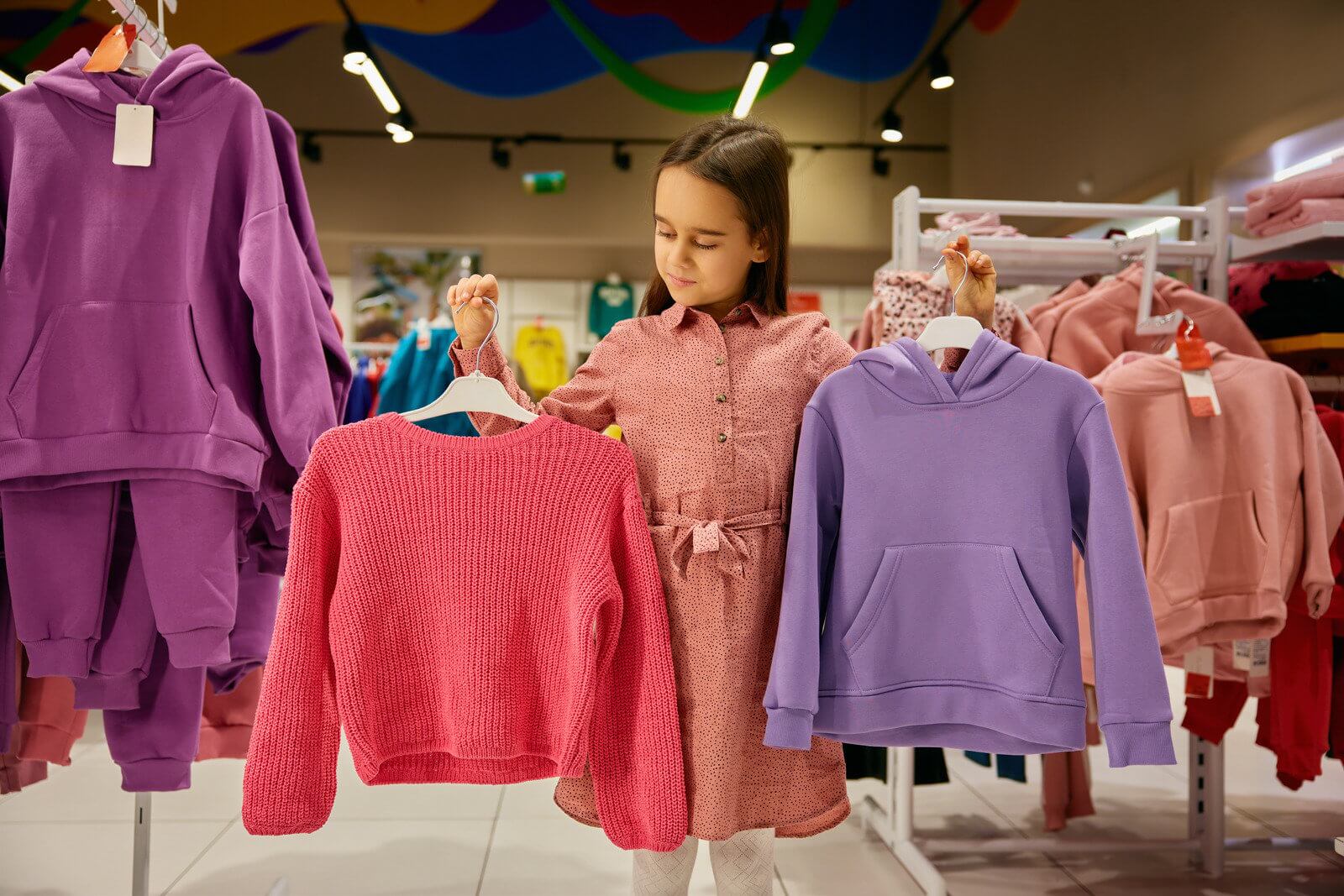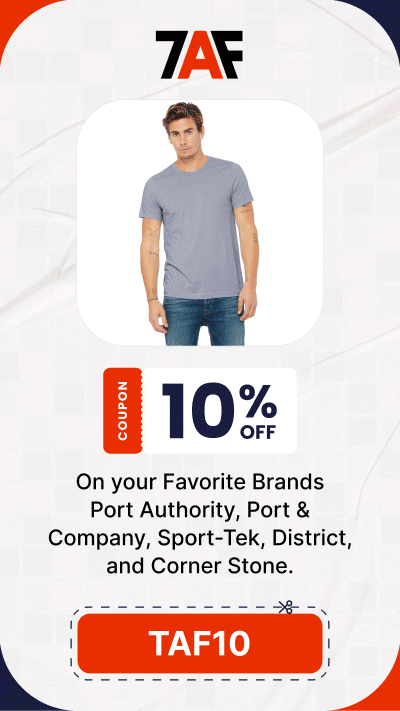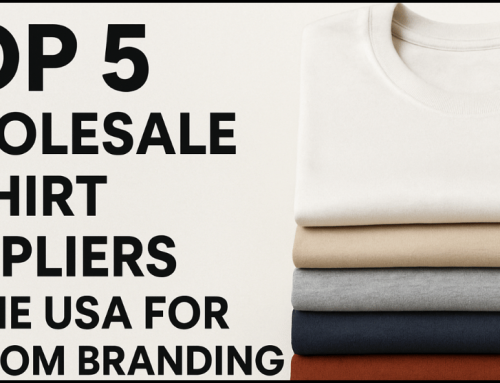
When considering apparel for your business, sweater vs sweatshirt is a key comparison. A sweater is a knitted garment made from wool or cotton that offers warmth and a refined, polished look. Meanwhile, a sweatshirt is a casual pullover, typically crafted from cotton or fleece, often associated with comfort and athletic wear.
Historically, sweaters originated from the British Isles in the 15th century, used for warmth by fishermen. Over time, they transitioned into mainstream fashion. On the other hand, sweatshirts were first introduced in the 1920s for athletes seeking comfortable, breathable garments during physical activities. These evolved into versatile pieces of leisurewear that have remained popular due to their comfort
Both garments have come a long way in terms of branding. Whether you want to customize sweaters for a more upscale corporate identity or sweatshirts for casual events and promotional giveaways, each option offers distinct advantages in enhancing brand visibility. Today, sweaters and sweatshirts are staples in bulk apparel orders, making them ideal for businesses looking to incorporate style and functionality into their branded clothing.
With growing versatility in design, sweater vs. sweatshirt comparisons highlight how each can serve different business needs, whether your focus is on casual, everyday use, or sophisticated corporate branding.
Key Differences Between Sweaters and Sweatshirts
This chart highlights the key distinctions between sweaters and sweatshirts, helping businesses make informed decisions when choosing apparel for their branding needs.
| Criteria | Sweaters | Sweatshirts |
| Material Composition | Typically made from wool, cotton, cashmere, or synthetic fibers, knitted for warmth. | Generally made from heavier cotton, fleece, or polyester blends, designed for comfort. |
| Style and Design Elements | More formal and fitted, often with textured patterns or cable knits, available as cardigans or pullovers. | Casual and relaxed, featuring a smooth surface with ribbed cuffs and hem, typically a pullover. |
| Warmth and Function | Provides superior warmth due to the thicker, insulating fabrics, suitable for colder climates. | Offers moderate warmth, best for layering or mild weather, often used in casual or athletic settings. |
Popular Materials Used in Sweaters and Sweatshirts
This variety of materials makes sweaters and sweatshirts adaptable to different climates and branding needs, allowing businesses to choose what best fits their requirements.
Common Sweater Materials
- Wool: Wool is the classic choice for sweaters due to its excellent insulating properties and natural moisture-wicking capabilities. It’s perfect for cold weather and offers a soft, luxurious feel.
- Cotton: Cotton sweaters are lightweight, breathable, and versatile, ideal for layering or mild climates. They’re also easy to care for.
- Cashmere: Known for its softness and high-end appeal, cashmere sweaters are
- lightweight yet warm, offering a more luxurious option for business or upscale occasions.
Common Sweatshirt Materials
- Cotton: Sweatshirts made from 100% cotton are breathable, comfortable, and soft, offering a relaxed fit. They are perfect for everyday wear and casual branding.
- Fleece: Often used in sweatshirts for added warmth, fleece is soft, insulating, and lightweight, making it ideal for cooler weather while maintaining comfort.
- Polyester Blends: Sweatshirts often combine cotton with polyester for durability, wrinkle resistance, and a smoother finish. These blends are easy to care for and ideal for activewear or team apparel.
Comfort & Versatility: Choosing the Right Garment
Choosing between a sweater and a sweatshirt depends on the level of comfort, climate, and the setting whether formal or casual making each garment versatile for different business and branding needs.
Comfort Factor for Both Garments
- Sweaters: Sweaters, especially those made from wool or cashmere, provide warmth and softness, making them ideal for colder conditions. They’re comfortable but may feel bulkier in warm settings.
- Sweatshirts: Sweatshirts, typically made from cotton or fleece, offer a soft, relaxed fit, prioritizing comfort over formality. They’re lightweight and ideal for all-day wear.
Versatility in Layering or Standalone Wear
- Sweaters: These can be worn alone for a polished look or layered over shirts for warmth. They’re more formal and often used in business-casual settings.
- Sweatshirts: Perfect for layering over t-shirts or under jackets, sweatshirts offer a more casual, athletic vibe, ideal for indoor and outdoor activities.
Adaptability to Various Climates
- Sweaters: Best suited for colder climates due to their insulating properties, particularly wool and cashmere varieties.
- Sweatshirts: Suitable for a wider range of climates, sweatshirts are great for mild to cool temperatures and are versatile enough to transition from indoor to outerwear.
Practical Business Uses for Sweaters and Sweatshirts
Sweaters and sweatshirts are versatile garments that can serve various business purposes, depending on the setting and objective. Whether you are outfitting staff for daily use or providing branded gear for promotional events, both options offer unique benefits tailored to different business needs. Below are some practical ways these garments can be integrated into your business strategy:
Corporate Uniforms and Casual Office Attire
- Sweaters: Sweaters provide a polished, professional appearance, making them perfect for corporate uniforms in business-casual environments. Branded sweaters can elevate a company’s image, offering comfort and sophistication.
- Sweatshirts: Ideal for more casual office settings or active industries, sweatshirts offer a relaxed fit and comfortable option for staff uniforms and school uniforms especially in creative or tech fields.
Promo Gear for Events and Giveaways
- Sweaters: Branded sweaters can be used as high-end promotional items at conferences and business events or for gifting to clients and partners, showcasing a premium image.
- Sweatshirts: Sweatshirts, with their casual appeal, are perfect for giveaways at outdoor events, sports tournaments, or company promotions, offering long-lasting brand exposure while ensuring comfort and practicality.
Customizing Sweaters vs. Sweatshirts for Brand Promotion
Customizing sweaters and sweatshirts allows businesses to showcase their brand in unique ways tailored to each garment’s material and design.
Methods for Customization (Embroidery, Screen Printing, Laser, DTF, Appliqué, Heat Transfer)
- Embroidery: Best suited for sweaters, offering a professional, textured look. Ideal for small logos and intricate designs.
- Screen Printing: Common for sweatshirts, enabling bold, vibrant designs on larger surface areas.
- Laser Etching: A precision technique for etching designs, often used on finer materials like wool or polyester blends.
- DTF (Direct-to-Film): A modern method for printing full-color designs with sharp details, great for sweatshirts.
- Applique: Adds texture and depth by sewing fabric patches onto the garment, popular for creating layered designs.
- Heat Transfer: Ideal for quick, budget-friendly customization, perfect for large logos on sweatshirts.
How Sweaters and Sweatshirts Carry Logos Differently
- Sweaters: The tighter weave of sweaters supports detailed, subtle logo placement, usually on the chest or sleeve, for a refined look.
- Sweatshirts: With a flat surface, sweatshirts handle larger, more prominent logos, allowing for eye-catching designs that can cover the front, back, or sleeves.
When to Choose Sweaters Over Sweatshirts for Bulk Orders
Sweaters are ideal for industries prioritizing a professional, polished image, such as finance, hospitality, corporate offices, and high-end retail. Their structured, formal look makes them perfect for businesses looking to elevate their brand presentation and align with a more upscale market.
Sweaters offer an elevated branding experience in scenarios like corporate gifting, workwear, or client-facing roles. They are often chosen when a business wants to project sophistication, making them an ideal promotional tool at industry events, trade shows, or business conferences.
Shop Wholesale Workwear
For companies looking to convey warmth, trust, and refinement, sweaters are an excellent choice for bulk orders from the top clothing vendor. Their higher perceived value than casual garments ensures recipients associate the brand with quality, professionalism, and care.
When Sweatshirts Are the Better Option for Your Business
Sweatshirts are a top choice for industries prioritizing comfort, casual wear, and active lifestyles. They are particularly popular with sports teams, fitness centers, and youth-oriented brands where mobility and a relaxed fit are essential. These garments work well for teams and clubs, providing a sense of unity without the formality of more structured apparel.
In the casual wear market, sweatshirts offer broad appeal. Their versatility makes them ideal for streetwear, leisure, or as promotional items at outdoor events, concerts, or festivals. Businesses targeting younger demographics or promoting an easygoing brand vibe often opt for sweatshirts due to their widespread popularity and comfort, which naturally align with a modern, laid-back image. Sweatshirts also work well in industries that embrace creative or tech-oriented cultures, where casual work environments benefit from comfortable, durable clothing that can be easily customized for brand visibility.
Additionally, sweatshirts are:
- A cost-effective option for bulk orders.
- Allowing businesses to distribute branded apparel widely.
- Maximizing their reach in casual or everyday settings.
Seasonal Demand: When to Stock Each Garment
Sweaters see peak sales during the colder months, typically from late fall through winter. This is when businesses and consumers seek warm, stylish garments for both professional and casual settings, making it the ideal time to stock bulk orders for sweaters.
In contrast, sweatshirts experience high demand year-round but see increased sales in early fall, late winter, and early spring. These times coincide with back-to-school shopping, athletic events, and outdoor activities, where comfort and versatility are key.
Weather plays a crucial role in these sales cycles. Colder climates drive sweater demand, while sweatshirts thrive in transitional seasons where layering is necessary.
Customization Techniques for Sweaters
| Customization Technique | Details |
| Embroidery and Material Compatibility | Sweaters made from materials like wool, cotton, and cashmere work well with embroidery, adding a refined, textured look. Embroidery blends seamlessly with heavier fabrics, making it durable and professional. |
| Best Logo Placements and Styles | For corporate sweaters, logos are typically placed on the left chest for a subtle, classy look. Other popular placements include the sleeve or back of the neck. Minimalistic, understated logos in single-color or metallic threads often complement the sophisticated nature of sweaters. |
Comparing Costs: Sweaters vs. Sweatshirts in Bulk
| Criteria | Sweaters | Sweatshirts |
| Average Cost of Production | Higher due to premium materials like wool, cashmere, and intricate knitting techniques. | Lower cost with common materials like cotton and polyester blends. |
| Price Benefits of Bulk Purchases | Bulk orders provide significant savings, but sweaters remain pricier per unit even with discounts. Ideal for upscale, professional branding. | Bulk sweatshirts offer larger price reductions, making them a more budget-friendly option for casual, high-volume orders. |
Trends in Sweater and Sweatshirt Design for Business Apparel
Sweaters maintain a strong presence in professional environments, especially in formal settings. Crewneck sweatshirts and V-neck sweaters in neutral tones like white, royal blue, and black dominate the corporate apparel landscape. These styles are often paired with subtle branding, like embroidered logos on the chest or sleeves, offering a polished look that blends seamlessly with business attire.
Cardigans are another growing trend in industries like hospitality and retail, where a polished yet approachable appearance is needed. For a premium feel, fabrics like wool and cashmere are often chosen, ensuring comfort and durability for daily wear. The overall trend leans toward simplicity, emphasizing clean lines and minimalist designs that resonate with professionalism and understated elegance.
Shop Wholesale Crewneck Sweatshirts
Upcoming Trends in Casual Business Wear
Sweatshirts are increasingly being adopted in casual business wear, particularly in creative and tech industries where the line between formal and casual is blurred. Oversized fits, which draw inspiration from streetwear, are becoming more common, with brands opting for bold logos and contemporary graphics to make a statement. Sustainable fabrics, such as organic cotton and recycled polyester, are also on the rise, driven by the growing demand for eco-conscious business practices.
In this space, designs often feature subtle yet impactful details like tonal logos, unique fabric textures, or embroidered accents that align with a modern, forward-thinking business aesthetic. Hooded sweatshirts, or sleeve less hoodies, are also gaining popularity, particularly in industries that value comfort and creativity over formality.
The integration of athleisure elements, such as zip-up sweatshirts or hybrid sweater-sweatshirt combinations, is becoming more common in workspaces that emphasize comfort without sacrificing style.
Conclusion: Sweater vs Sweatshirt – Choosing the Right Garment for Your Business
In the sweater vs sweatshirt debate, both garments offer unique advantages depending on your business needs. Sweaters bring a refined, professional edge, making them ideal for corporate environments or upscale branding. Sweatshirts, with their comfort and versatility, are better suited for casual workspaces, team apparel, or promotional giveaways. Whether prioritizing warmth, style, or brand visibility, understanding the key differences between these two garments allows businesses to make informed decisions and create effective, customized apparel strategies.
Published on:
September 16, 2024




